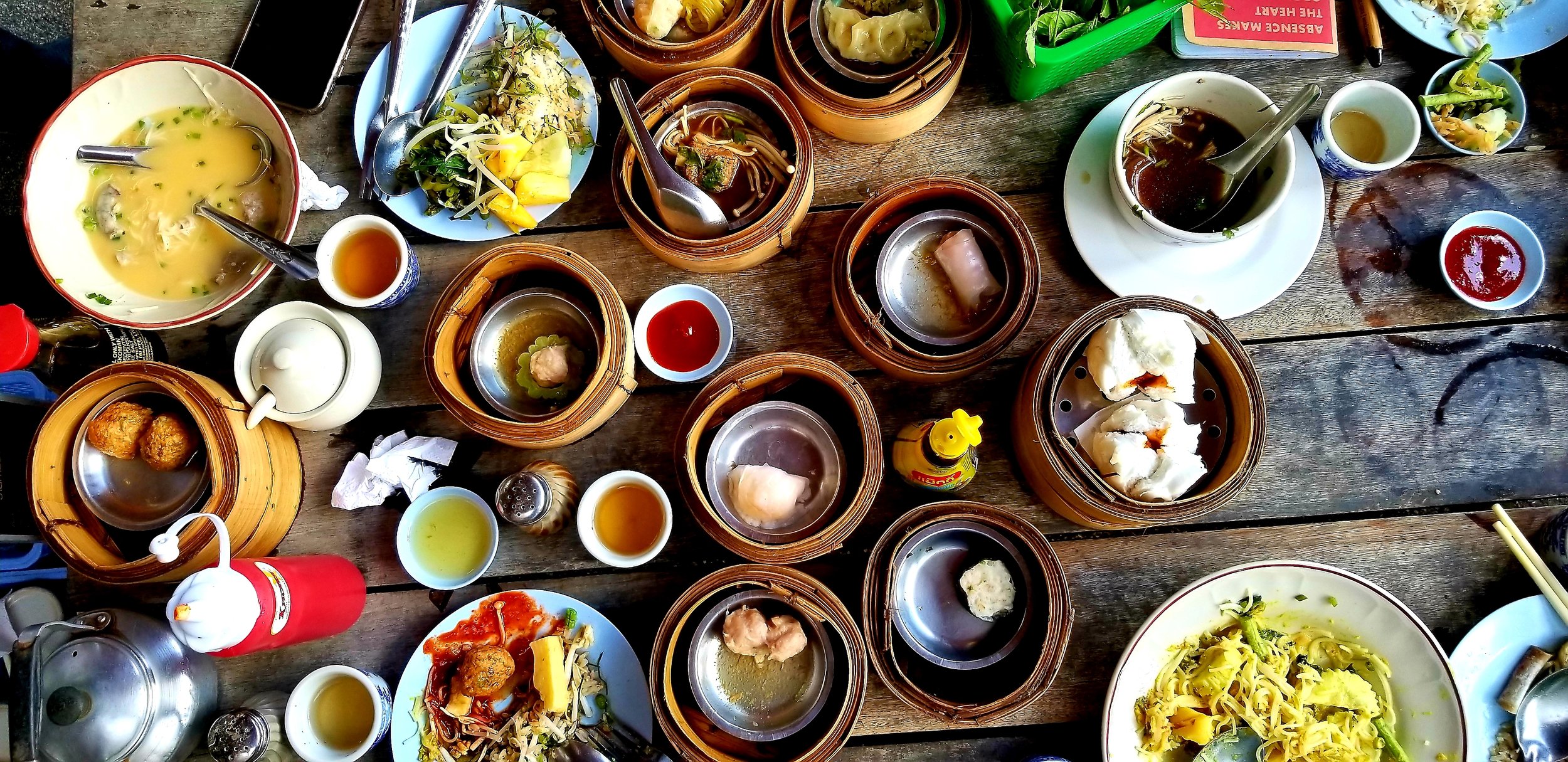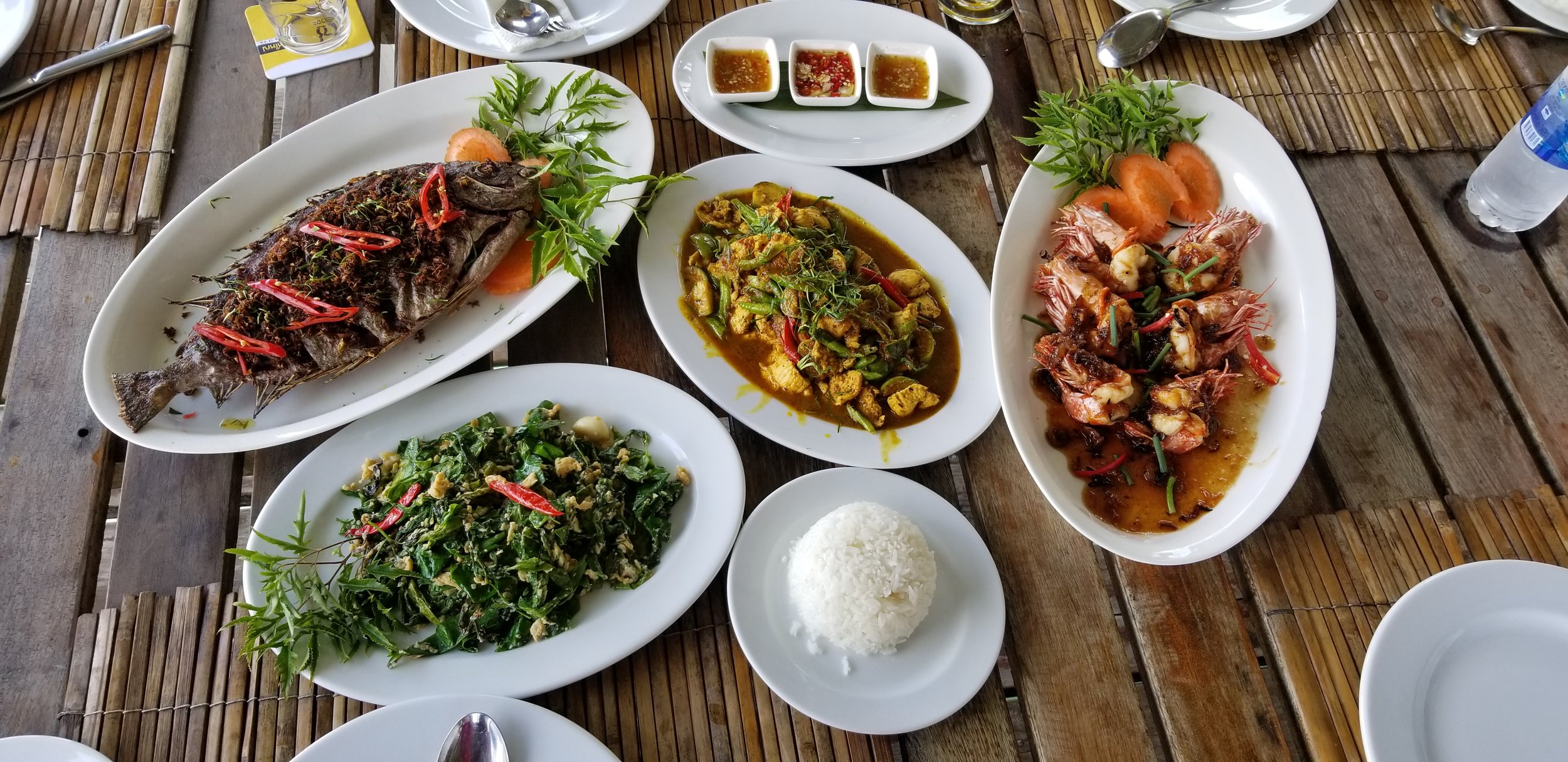Pairing Partners: How to Match Wine With Thai Food
Elevate your weekly takeout with these stellar matches for Thai spices
All photos by Kelly Magyarics
Thai food is some of the most beautiful, aromatic and delicious cuisine in the world, rich with texture, vibrant colors and intense flavors. But it can be a bit daunting to try to match its signature ingredients—think lemongrass, cilantro, chiles, galangal and fish sauce—with a bottle of wine. (And let’s face it, the list at your favorite Thai joint probably could use some tweaking, which is why you may feel resigned to order an ice cold Singha.) However, with a little bit of guidance, you can find a wine to make your som tum sing and your pad Thai pop.
Here are some tips:
Look to white Rioja to match aromatic and lightly-flavored ingredients
Changes to regulations in the region in 2017 means that additional foreign varietals are now permitted in Rioja—including sauvignon blanc. “Our blends of Viura [with] good acidity and sauvignon [blanc] have produced beautiful whites,” says Ana Fabiano, North American Trade Director and Brand Ambassador for DOCa Rioja and the author of the book The Wine Region of Rioja. “With Thai basil, lemongrass, cilantro, vegetables [and] light soy sauce...these [wines] are truly home runs.”
Bottles to try:
2017 El Coto Blanco Viura ($12), which has white fruit aromas, zesty citrus flavors and a freshness in the nose and palate.
2018 Carlos Serres White Rioja ($11), a blend of viura and tempranillo blanco, with notes of brine and stone fruit and a crisp and clean finish.
Or try a fruity young red Rioja or full-bodied Rioja rosé with spicier or richer dishes
“Our young Riojas, often referred to in trendy terms as joven, carry a green trust seal on the back,” Fabiano says. “They are easy, accessible in price and palate and are perfect partners for Thai dishes.” The balanced fruit, good acidity and soft tannins of young red Rioja—and Rioja Rosé—are a match for curries and anything with chilis, ginger or fish sauce. These simpler fruitier styles contrast with Reservas and Gran Reservas, she says, whose extended time in oak can lead to spiciness, fuller-body and a lengthier finish that can compete and contrast rather than complement.
Bottles to try:
2017 Campo Viejo Tempranillo ($14), with rich aromas of ripe red fruit, wood nuances, vanilla and sweet spices; the palate is perfumed, soft and fresh with a lengthy finish of red fruit and cocoa. Campo Viejo was Spain Winery of the Year in the 2019 NY International Wine Competition.
2018 Marques de Caceres Excellens Rosé ($15), a blend of garnacha tinta and tempranillo, with a pretty pale rose color and aromas of rose petals and peaches. The palate shows white peach and pear and a balanced, delicate mouth feel, with a fresh and succulent finish.
(Off-dry) aromatic whites will offset all that spice and saltiness
Jeff Virojanapa, owner of White Orchids Thai Cuisine in Center Valley, Pennsylvania, says that while the go-to advice might be to uncork a sweeter style of riesling, he suggests dialing it back. “Instead of being too sugar-forward, you’ll find bright acidity and a delicate sweetness—that can bring out more subtle flavors in Thai cooking,” he says. Grüner veltliner offsets the heat of green curry as well as summer rolls and noodle salads, herbaceous dishes like Pad Gra Prow with basil, cilantro and chicken topped with fried eggs are a match for zippy New Zealand sauvignon blanc and floral viognier works with spicy pork belly and lap cheong drunken noodles.
Bottles to try:
2018 The Seeker Riesling ($15), an off-dry expression from the Mosel with crispy acidity and vibrant citrus, stone fruit and pineapple, and a mineral-driven finish. This wine won a gold medal in the 2019 NY International Wine Competition.
2019 Craggy Range Sauvignon Blanc Te Muna Road ($27), pale lemon straw in the glass, with intense aromas of white peach, citrus blossom, honeysuckle and makrut lime. It’s rich on the palate with ripe citrus and fresh apple and a nuanced, dry mouth feel.
Steer clear of oaky whites and powerful reds
Big bold dry cabs, spicy pinot noirs, zinfandel or Rhône expressions are the biggest upsetters according to Ryan Watts, sommelier and direct-to-consumer coordinator for Cameron Hughes Wine. “All [they] will do [is] over amplify the spice in the dish,” he says. “Let the dish handle the spice.” He believes your best friends for Thai food may be bottles on the sweeter side, from wallet-friendly white zinfandel (yes, there are occasions when it’s chic to drink it!) to wallet-spendy options including Sauternes and German Trockenbeerenauslese.
Bottles to try:
NV Barefoot White Zinfandel ($6), full of fruity flavors of strawberries, pears, pineapple and peaches and a juicy and smooth mouth feel
2018 Pennyroyal Farm Muscat ($32), a vin doux naturel from California’s Anderson Valley, has aromas of orange blossoms, flavors of honey cake and a rich finish.
When in doubt, remember that less is more
Lighter body, lower tannins, shorter finish: these are the hallmarks of Thai takeout (or dine in) wines, says Virojanapa. “Thai cuisine has such a wide swath of flavors from sweet to savory to spicy (sometimes all in one bite!) that you don’t want to convolute or confuse your palate.” So if you are craving pinot noir, select a fruitier, silkier one rather than a super complex and spicy offering; or order a stainless steel or unoaked chardonnay rather than a barrel-fermented butter bomb.
Bottles to try:
2015 Blair Estate Delfina’s Pinot Noir ($65), a very food -versatile pinot with cherry vanilla and cream on the nose, bright sweet raspberry, cherry, dark plum on the palate and a finish that hints of spiced flowers and acidity. This wine was a gold medal winner in the 2019 NYIWC.
2016 Artisan Unoaked Chardonnay ($10), an unoaked wine with notes of ripe apple, lemon and pair and juicy acidity (bronze medal, 2019 NYIWC).



